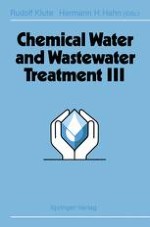Exactly ten years ago an experiment was started that proved to be extremely successful: the First Gothenburg Symposium. Its intent was to further the under standing of all processes pertaining to Chemical Water and Wastewater Treatment, and to bring together specialists working in basic research as well as in devel opment and administration. Now, the Proceedings of the Sixth Symposium are about to be published, clearly proving that there is a need for this forum. They dramatically illustrate the significance and the dynamic development of the topics of these symposia. It is fascinating to witness that in this time of reduced economic growth or even standstill, the environmental drive has not come to a halt, as many anticipated or feared. It is accepted more and more that the protection of the environment, a constant theme in all the Gothenburg Symposia, is not only a topic to be dealt with in times of affluence; it is now also seen as an instrument for cutting ex penditure, saving energy, and husbanding resources. The ever growing interest in these Gothenburg Symposia, documented by the large number of contributions the scientific panel received and the large demand for the books of this series that always exceeds the supply, testify to this commitment.
